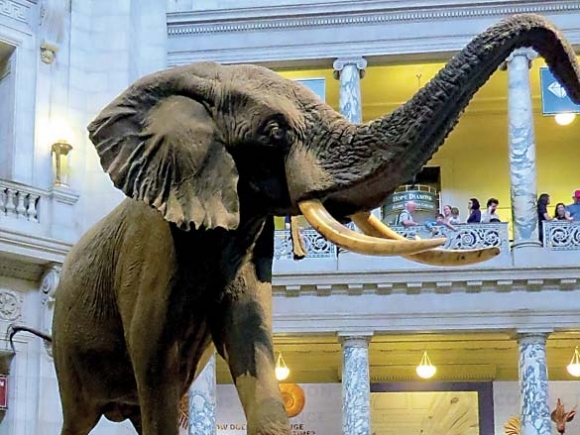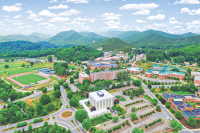The Naturalist's Corner: Overwhelmed

There are bucket lists and then there are bucket lists. As parents, the bucket lists we envision for our kids do not necessarily conform to their own bucket list. But this spring break we stood our ground and imposed, gasp, D.C. and the Smithsonian for our annual trip.
The Smithsonian Museum of Natural History (SMNH) is nonpareil in scope, mission, detail and scientific acumen. The museum is larger than 18 football fields and is home to the largest natural history collection in the world. It maintains the most extensive collection of natural history artifacts and specimens in the world. There are more than 145 million objects and/or specimens in the SMNH. So suffice it to say that one morning during spring break will not make you an expert on the Smithsonian. But if you’ve had your coffee or cheerios — depending on age differential — it is clearly an eye-opening experience.
There are 10 permanent exhibitions at the SMNH — Janet Annebar Hall of Geology, Gems and Minerals (think Hope Diamond), David H. Koch Hall of Human Origins (focusing on six million years of evolution), Sant Ocean Hall (giant squid and gray whale skeletons), Butterflies + Plants: Partners in Evolution (butterfly pavilion), Eternal Life in Ancient Egypt (do you know where your mummy is), Kenneth E. Behring Family Hall of Mammals (274 specimens on display), Dinosaur and Fossil Hall (closed for expansion — re-opening 2019 — in the meantime Last American Dinosaur and FossiLab exhibits help scratch that dinosaur itch), Orkin Insect Zoo (daily tarantula feedings), Bone Hall (oldest exhibit in the museum with nearly 300 vertebrate skeletons and a brand new “Skin and Bones” interactive app for your phone), and African Voices (highlighting the global influence of Africa’s peoples through the history of time).
In hindsight, if your spring break happens to coincide with the National Cherry Blossom Festival, you may want to research the Smithsonian well enough to know what exhibits are at the top of your list and target them for early arrival or you may want to defer to another date. The Smithsonian website notes if you’re looking for a quieter museum experience, “Visit between Monday and Wednesday, or any weekday during September and February.”
We were there during the last week of the 2017 Cherry Blossom Festival and while it was winding down, we had lots of company. But even with the blossom peekers, we arrived at the SMNH around 9:30 on a Monday morning and there was only about a 10-minute wait to get in. The first couple of hours weren’t too bad but by noon the mass of humanity was getting pretty close.
We managed to at least browse through all exhibits. My girls’ favorite was the Hall of Mammals — besides the 274 specimens of animals from around the world, there was a prevalent and detailed storyline showcasing mammalian evolution over 225 million years. I enjoyed that because it tied right in with my favorite exhibit, the Hall of Human Origin.
Related Items
But by 2 o’clock we had rubbed enough shoulders and fell out on the National Mall. After catching our collective breath, we decided to visit the National Gallery of Art — what a great decision. Cool, not crowded, and unhurried, it was a great way to decompress, and nothing instills humility in the soul like standing in front of great art. We visited the West Building that afternoon. The West Building exhibits works from the medieval period through the late 19th century, featuring such masters as da Vinci, Rembrandt, Monet and Van Gogh plus many others. We enjoyed the West Building so much that we began our second day of D.C. touring in the East Building with its collection of modern and contemporary art showcasing Matisse, Pollock, Warhol, Picasso and others.
After all, I may not know what I like, but I know art.
Don Hendershot is a writer and naturalist. He can be reached at This email address is being protected from spambots. You need JavaScript enabled to view it..









